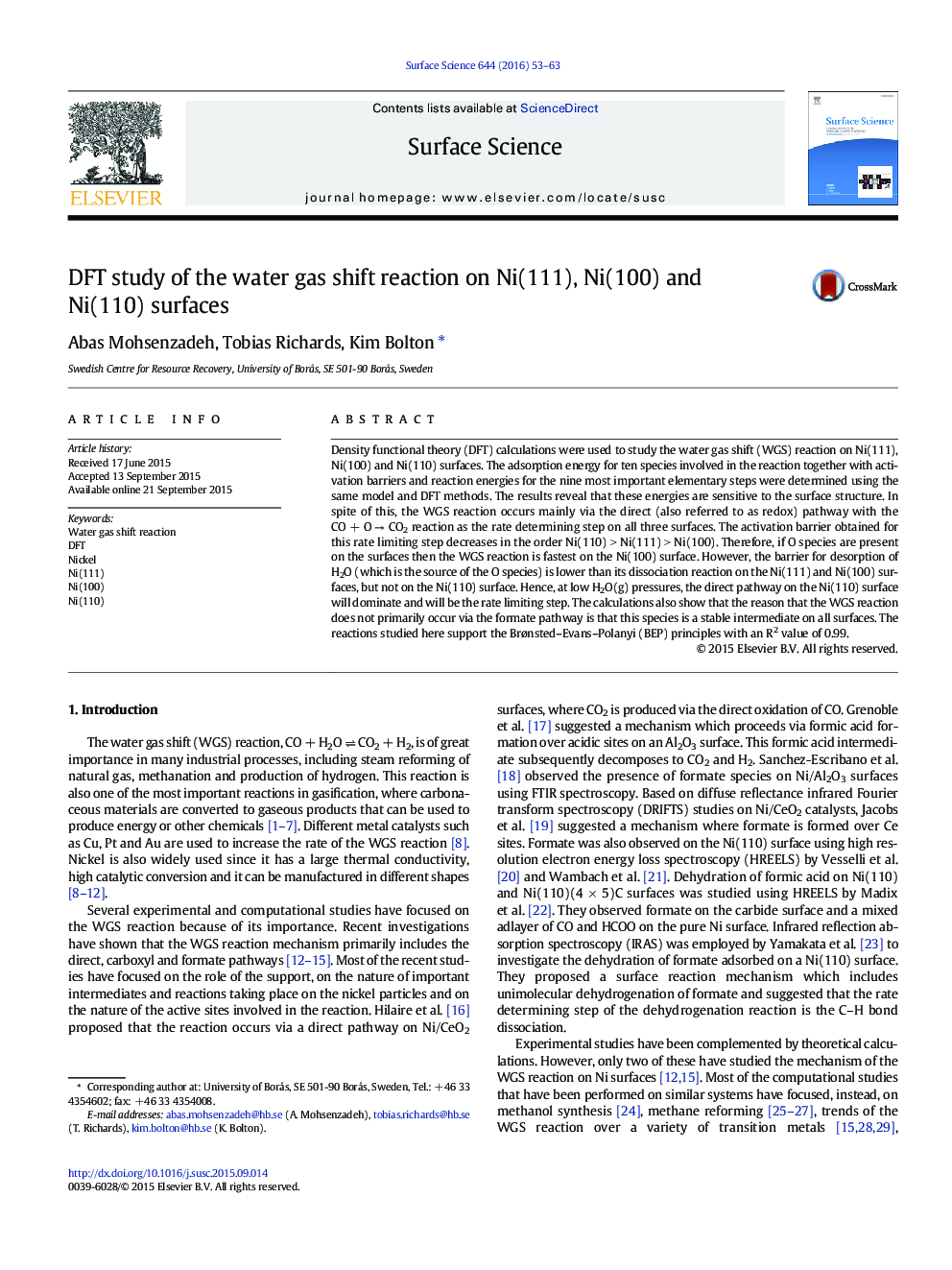| کد مقاله | کد نشریه | سال انتشار | مقاله انگلیسی | نسخه تمام متن |
|---|---|---|---|---|
| 5421551 | 1507886 | 2016 | 11 صفحه PDF | دانلود رایگان |

- The water gas shift reaction was examined on Ni(111), Ni(100) and Ni(110) surfaces.
- The results reveal that these energies are sensitive to the surface structure.
- The reaction occurs mainly via the direct pathway on all three surfaces.
- The reaction is fastest on Ni(100) if O species are present on the surfaces.
Density functional theory (DFT) calculations were used to study the water gas shift (WGS) reaction on Ni(111), Ni(100) and Ni(110) surfaces. The adsorption energy for ten species involved in the reaction together with activation barriers and reaction energies for the nine most important elementary steps were determined using the same model and DFT methods. The results reveal that these energies are sensitive to the surface structure. In spite of this, the WGS reaction occurs mainly via the direct (also referred to as redox) pathway with the CO + O â CO2 reaction as the rate determining step on all three surfaces. The activation barrier obtained for this rate limiting step decreases in the order Ni(110) > Ni(111) > Ni(100). Therefore, if O species are present on the surfaces then the WGS reaction is fastest on the Ni(100) surface. However, the barrier for desorption of H2O (which is the source of the O species) is lower than its dissociation reaction on the Ni(111) and Ni(100) surfaces, but not on the Ni(110) surface. Hence, at low H2O(g) pressures, the direct pathway on the Ni(110) surface will dominate and will be the rate limiting step. The calculations also show that the reason that the WGS reaction does not primarily occur via the formate pathway is that this species is a stable intermediate on all surfaces. The reactions studied here support the Brønsted-Evans-Polanyi (BEP) principles with an R2 value of 0.99.
118
Journal: Surface Science - Volume 644, February 2016, Pages 53-63